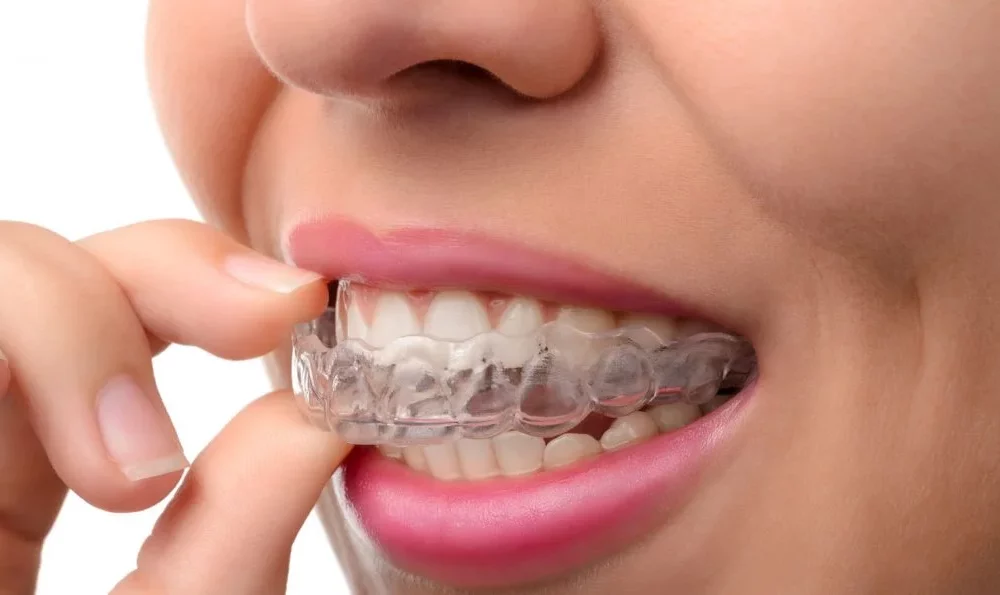Orthodontic Underbite Correction: Modern Techniques for a Better Smile

An underbite, a common dental misalignment, can significantly affect both one’s smile and overall oral health.
This article provides comprehensive information regarding underbites, including the diagnosis and potential risks associated with leaving them untreated, as well as various treatment options available, such as traditional braces and Invisalign.
It carefully evaluates the pros and cons of each method, discusses associated costs, and offers guidance on maintaining the results achieved.
Whether an individual is seeking a solution for themselves or for a loved one, this guide serves to facilitate well-considered choices for a healthier, more confident smile.
What Is an Underbite?
An underbite is a specific type of malocclusion characterized by the lower teeth protruding beyond the upper teeth, resulting in misalignment of the jaw. This condition can adversely affect functional occlusion and bite mechanics, as well as influence overall facial aesthetics and an individual’s self-esteem.
Understanding the implications of an underbite is essential, as it can impact oral health, lead to discomfort, and require orthodontic treatment for effective correction.
How Is an Underbite Diagnosed?
Diagnosing an underbite requires a comprehensive orthodontic assessment, which generally encompasses a thorough examination of the patient’s bite mechanics and alignment.
Dental x-rays and occlusal analysis are critical components that enable orthodontic specialists to evaluate the severity of the malocclusion and formulate effective treatment options.
Patient education plays a vital role in this process, as a clear understanding of the diagnosis fosters improved compliance and enhances treatment outcomes.
What Are the Risks of Leaving an Underbite Untreated?
Failing to address an underbite can result in numerous risks and complications that negatively impact both dental health and overall quality of life. These risks encompass issues related to jaw alignment, accelerated wear on the teeth, and the potential development of temporomandibular joint (TMJ) disorders.
Furthermore, untreated malocclusion may affect facial symmetry and aesthetics, ultimately diminishing patient satisfaction and self-esteem.
What Are the Treatment Options for Underbite Correction?
Underbite correction can be accomplished through a range of treatment options tailored to the individual’s specific needs and the severity of the condition. These options include traditional dental braces, advanced methods such as Invisalign, orthodontic surgery, and the use of functional appliances.
The selection of an appropriate treatment will depend on various factors, including the patient’s age, the degree of malocclusion, and personal preferences. It is essential that these considerations are thoroughly discussed during an orthodontic consultation.
1. Traditional Braces
Traditional dental braces represent one of the most prevalent and effective methods for correcting an underbite, employing brackets and wires to facilitate gradual tooth movement over time. This orthodontic treatment necessitates patient compliance and regular visits for adjustments, which are essential for achieving optimal outcomes and improved jaw alignment.
By applying consistent pressure on the teeth, these braces progressively shift them into their proper positions, significantly enhancing both functionality and aesthetics. Patients typically experience gradual improvements in their bite and appearance, which can lead to increased confidence.
Achieving these desirable results relies heavily on adherence to treatment guidelines, including the maintenance of proper oral hygiene and the avoidance of certain foods. Compliance challenges may arise, particularly among younger patients who may struggle to adjust to wearing braces or adhere to the use of elastic bands as instructed.
Understanding these patient experiences is crucial for ensuring the success of the treatment.
2. Invisalign
Invisalign represents an innovative alternative to traditional braces, employing clear dental aligners to progressively realign teeth. This approach is particularly appealing to individuals who prioritize aesthetics and patient comfort. As part of a comprehensive orthodontic plan, Invisalign effectively addresses mild to moderate underbites while promoting optimal dental hygiene.
This advanced method distinguishes itself within the field of aesthetic dentistry by providing patients with the benefit of removable aligners, which can be taken out during meals and while performing daily dental care. Unlike metal braces, which may often feel bulky and uncomfortable, these clear aligners are custom-crafted to fit securely, thereby enhancing overall comfort without sacrificing visual appeal.
Many individuals value how Invisalign discreetly resolves orthodontic challenges, allowing them to maintain confidence throughout the treatment process. Furthermore, the aligners are constructed from smooth plastic, significantly reducing the risk of gum irritation, making them a versatile solution for those seeking options for underbite correction.
3. Jaw Surgery
In cases of severe underbites, orthodontic surgery may be necessary to attain proper jaw alignment and function. This surgical intervention typically involves repositioning the jaws to correct discrepancies and may, in some instances, be followed by the use of permanent retainers to maintain the new positioning.
The motivation for such a procedure often arises from the significant impact that an underbite can have on both aesthetics and oral health. During the surgical process, the oral surgeon will conduct a thorough analysis of the patient’s specific jaw structure, utilizing advanced imaging techniques to develop a customized treatment plan. The surgery itself generally lasts a few hours and is performed under general anesthesia to ensure the patient’s comfort.
Post-operative recovery typically involves some degree of swelling and discomfort; however, with diligent care and adherence to the surgeon’s recommendations, most individuals can anticipate a return to normal activities within a few weeks.
Ultimately, achieving optimal jaw alignment not only enhances facial symmetry but also contributes to improved bite functionality, leading to better overall oral health and an enhanced quality of life.
4. Palatal Expanders
Palatal expanders are orthodontic appliances specifically designed to widen the upper jaw, thereby creating additional space for teeth and helping with the correction of an underbite. These devices are particularly effective during the growth modification phase in pediatric orthodontics, as they facilitate improved jaw alignment and enhance overall dental health.
During this critical developmental period, a child’s jaw and facial bones are actively growing, making it an opportune time for such interventions. The device gradually exerts gentle pressure on the teeth and bones, effectively promoting lateral expansion of the palate.
By increasing the width of the upper jaw, palatal expanders aid in realigning the dental arches and significantly diminishing the severity of an underbite. This proactive approach not only improves aesthetics but also supports optimal function, resulting in healthier bites and enhanced overall oral health in the long term.
What Are the Pros and Cons of Each Treatment Option?
Evaluating the advantages and disadvantages of each treatment option for underbite correction is essential for determining the most appropriate approach for individual patients.
Factors such as effectiveness, comfort, aesthetics, and treatment duration must be carefully considered to facilitate well-considered choices during the orthodontic consultation.
How to Choose the Right Treatment Option for You?
Selecting the appropriate treatment option for underbite correction necessitates a comprehensive orthodontic consultation, during which patients can articulate their specific needs, preferences, and concerns.
A patient-centered approach is essential in developing customized orthodontic plans that address individual circumstances, taking into account factors such as patient comfort and adherence to the treatment protocol.
What Is the Cost of Underbite Correction?
The cost of underbite correction can vary considerably depending on the selected treatment option, the complexity of the individual case, and the geographic location. It is essential to understand the potential for insurance coverage and to discuss consultation fees with the orthodontic specialist.
These steps are crucial in preparing for the financial implications of orthodontic treatment.
How to Maintain Results after Underbite Correction?
Maintaining results following underbite correction is essential for ensuring the longevity of treatment outcomes and preventing relapse. This typically involves the use of retainers, adherence to appropriate dental hygiene practices, and regular orthodontic follow-up appointments to monitor progress and implement necessary adjustments.
What Are the Potential Side Effects of Underbite Correction Treatment?
As with any orthodontic treatment, the correction of an underbite may entail potential side effects that patients should be cognizant of. Common issues may encompass discomfort, alterations in bite mechanics, and, in rare instances, complications that necessitate further interventions.
Educating patients about these risks is crucial for obtaining informed consent and achieving optimal treatment outcomes.
Frequently Asked Questions
What is an orthodontic underbite?
An orthodontic underbite occurs when the lower teeth extend further forward than the upper teeth, resulting in a misaligned bite.
What are some common causes of an orthodontic underbite?
Orthodontic underbites can be caused by genetics, thumb sucking, and early childhood habits such as prolonged bottle feeding or pacifier use.
What are the benefits of correcting an orthodontic underbite?
Correcting an orthodontic underbite can improve the appearance and function of the teeth, as well as reduce the risk of jaw pain and other dental issues.
What are some modern techniques used for correcting an orthodontic underbite?
Modern techniques for correcting an orthodontic underbite include clear aligners, self-ligating braces, and surgical options such as jaw realignment surgery.
How long does it typically take to correct an orthodontic underbite?
The length of treatment for correcting an orthodontic underbite varies depending on the severity of the underbite and the chosen treatment method. On average, it can take 1-3 years.
Will correcting an orthodontic underbite be painful?
There may be some discomfort during the initial stages of treatment, but modern techniques and advancements in orthodontics have made the process much more comfortable and manageable for patients.





